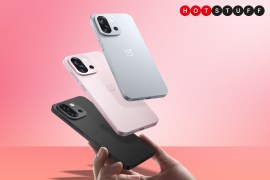Samsung Galaxy S24 Ultra vs Apple iPhone 15 Pro Max: which is best?
We stack up Samsung's new Ultra-est Galaxy against Apple's Pro-iest iPhone
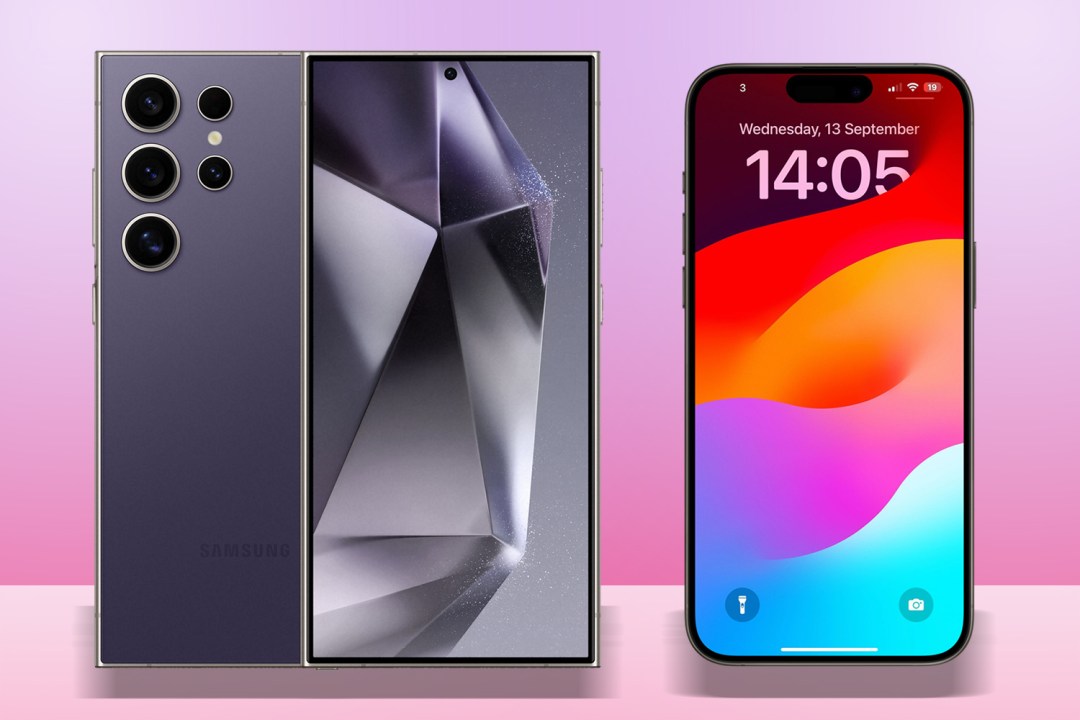
Samsung Unpacked January 2024 saw the S24 generation of Galaxy smartphones revealed. Headlining the new line-up is the S24 Ultra – a productivity-minded and photography-focused flagship. Things look pretty similar, but the newest Samsung flagship has made some notable steps forward. Under the hood, things have got a decent bump, too. But, how does the S24 Ultra stack up to its Apple competitor, the iPhone 15 Pro Max?
Now that I’ve fully reviewed the Galaxy S24 Ultra, I’ve got a much better idea how it stacks up to one of its biggest competitors. If you’re thinking about getting yourself a new handset and aren’t sure which to pick, read on:
Design & display: Sharp vs smooth
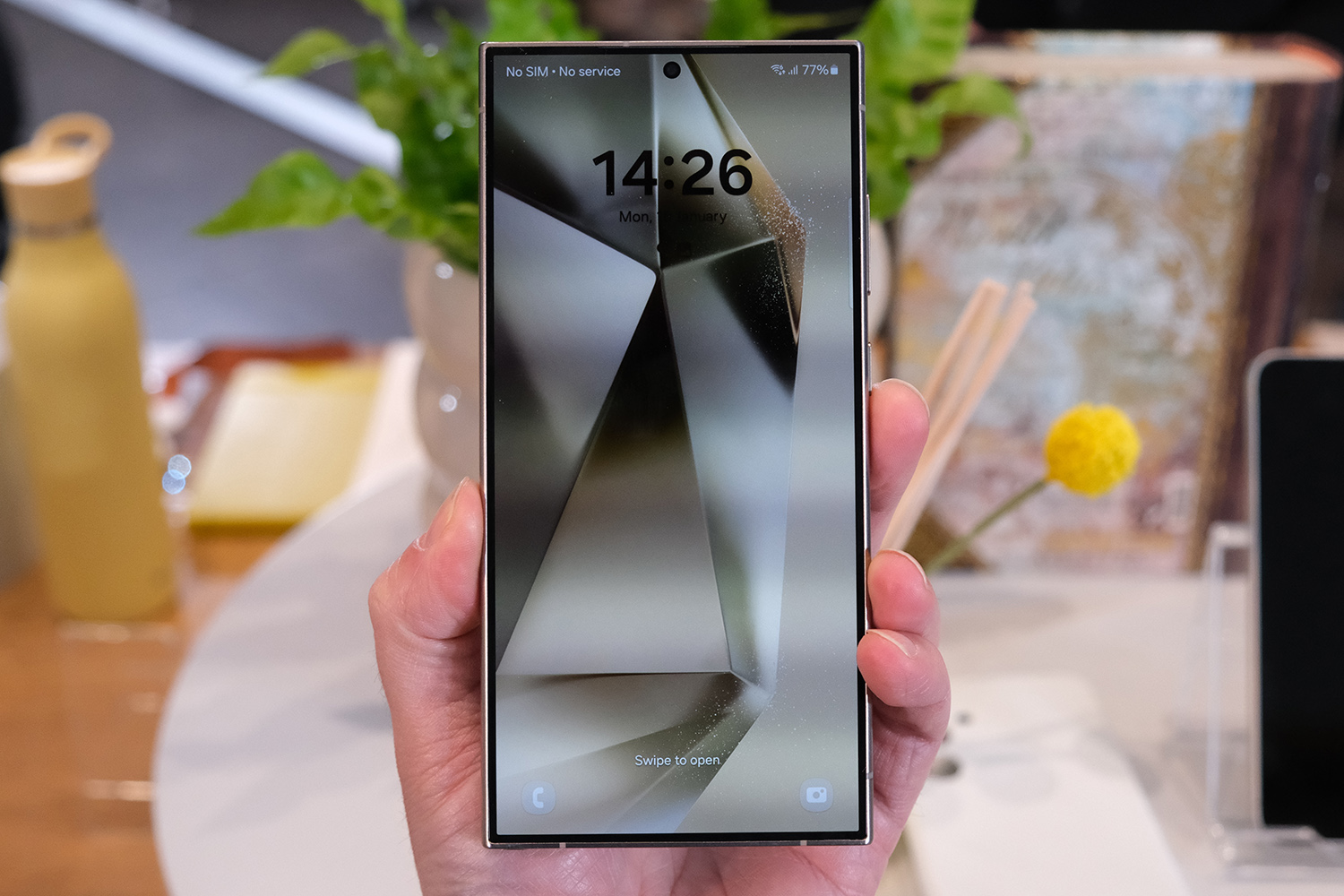
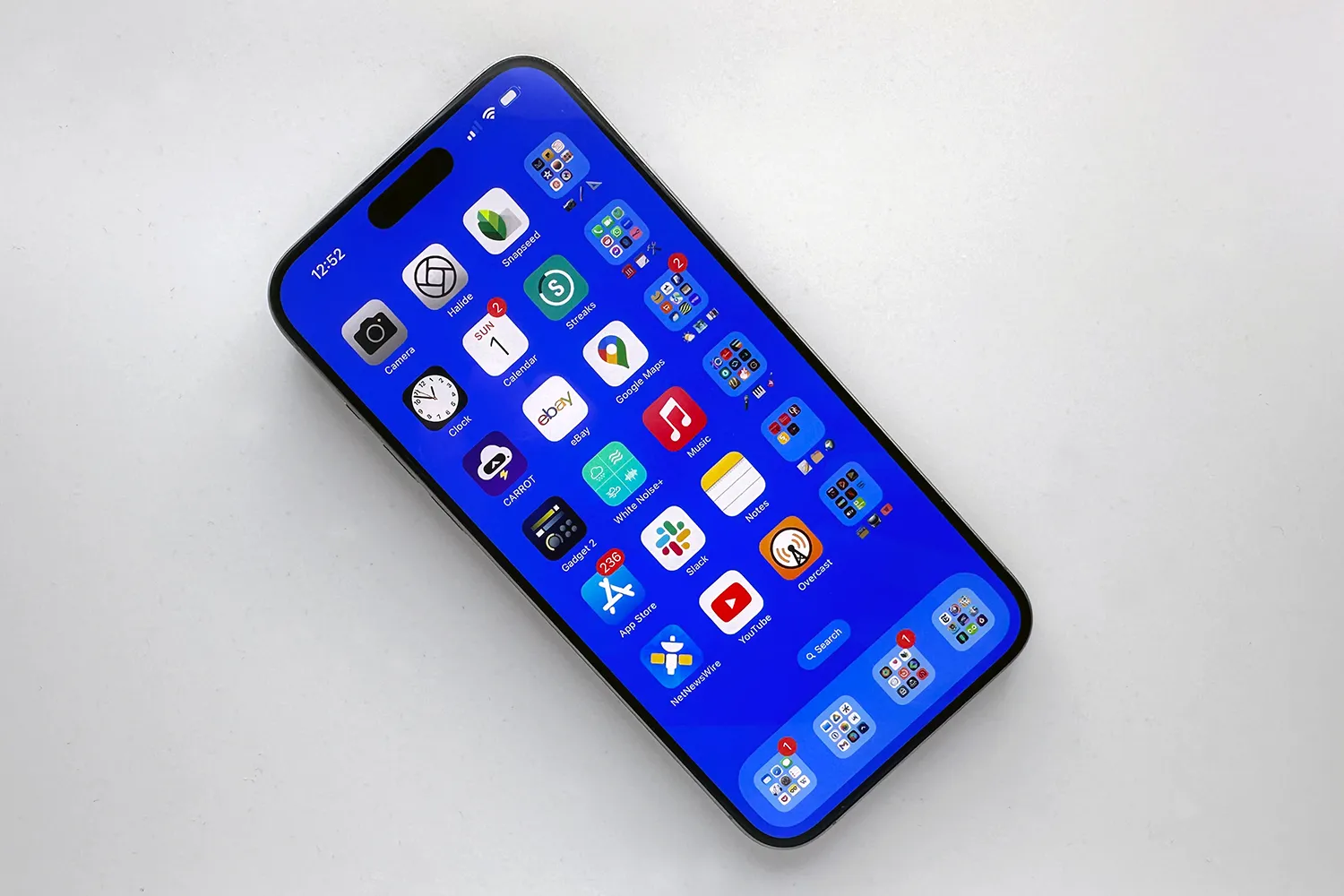
The Galaxy S24 Ultra is a pretty familiar face when you look at last year’s Galaxy S23 Ultra. But there are a few key differences from its siblings in the line-up. The corners are rounded (look closely), but the handset still keeps its boxy, rectangular frame with sharp edges. This time around, Samsung is using a more premium and more durable titanium frame. It’ll help keep your phone protected, while still making sure it’s easy on the eyes. This trend continues to the rear, where you’ll find Gorilla Glass Victus 2 that’s pretty drop-resistant. You’ll be able to nab this device in Titanium Gray, Black, Violet, and Yellow.
Samsung’s protected the display with Gorilla Armor glass, for a higher resistance to any accidental drops and scratches. It’s a flat display, too, with no rounded edges that are easier to damage. And what a display it has to protect. The S24 Ultra packs a 6.8in QHD+ AMOLED panel with a 3200 x 1440 resolution. It’s going to look buttery smooth, thanks to a refresh rate up to 120Hz. But thanks to LTPO tech, it can drop back down to 1Hz when needs be to save your battery life. It can blast out a maximum of 2600 nits of brightness, so can play HDR content and let you see what’s what on even the sunniest of days.
Design-wise, the iPhone 15 Pro Max could not be more different. Where Samsung’s opted for sharp corners, Apple’s gone soft. The corners of the phone curve round to make it more comfy to hold. And the sides of the phone are ever-so-slightly curved too, replacing the squared-off sides from iPhones that came before. It, too, uses a titanium frame instead of stainless steel. But Apple is marketing this as a key selling point for its Pro-iest smartphone. It’s lighter, while still being scratch-resistant, and is a big design draw. In another big change, Apple’s long-running mute switch has been swapped for a customisable haptic Action Button. You can set this up to perform a multitude of different tasks, according to what tickles your fancy. Oh, and down at the bottom, Apple has swapped to USB-C charging now, ditching the proprietary Lightning connector. Things are a little more tame when it comes to colours, you can nab one in Black, White, Blue, or Natural Titanium.
Up front, Apple uses its Ceramic Shield tech to give you extra resilient glass over the display. It’s a 6.7in OLED display with a 2796×1290 resolution. Like last year, the iPhone 15 Pro Max also cranks up to 120Hz or back down to 1Hz, depending on what’s going on. The iPhone manages a hit a slightly lower 2000 nit peak brightness in HBM – which is still perfectly usable outdoors in strong sunshine, and supports Dolby Vision content.
The iPhone is a bigger difference from its predecessor, and now looks very different to the Galaxy S24 Ultra. The device you pick will likely depend more on the design you prefer. Although, Samsung’s new flagship does have some impressive numbers behind its display, beating out Apple’s effort.
Performance, battery, software: 4nm vs 3nm
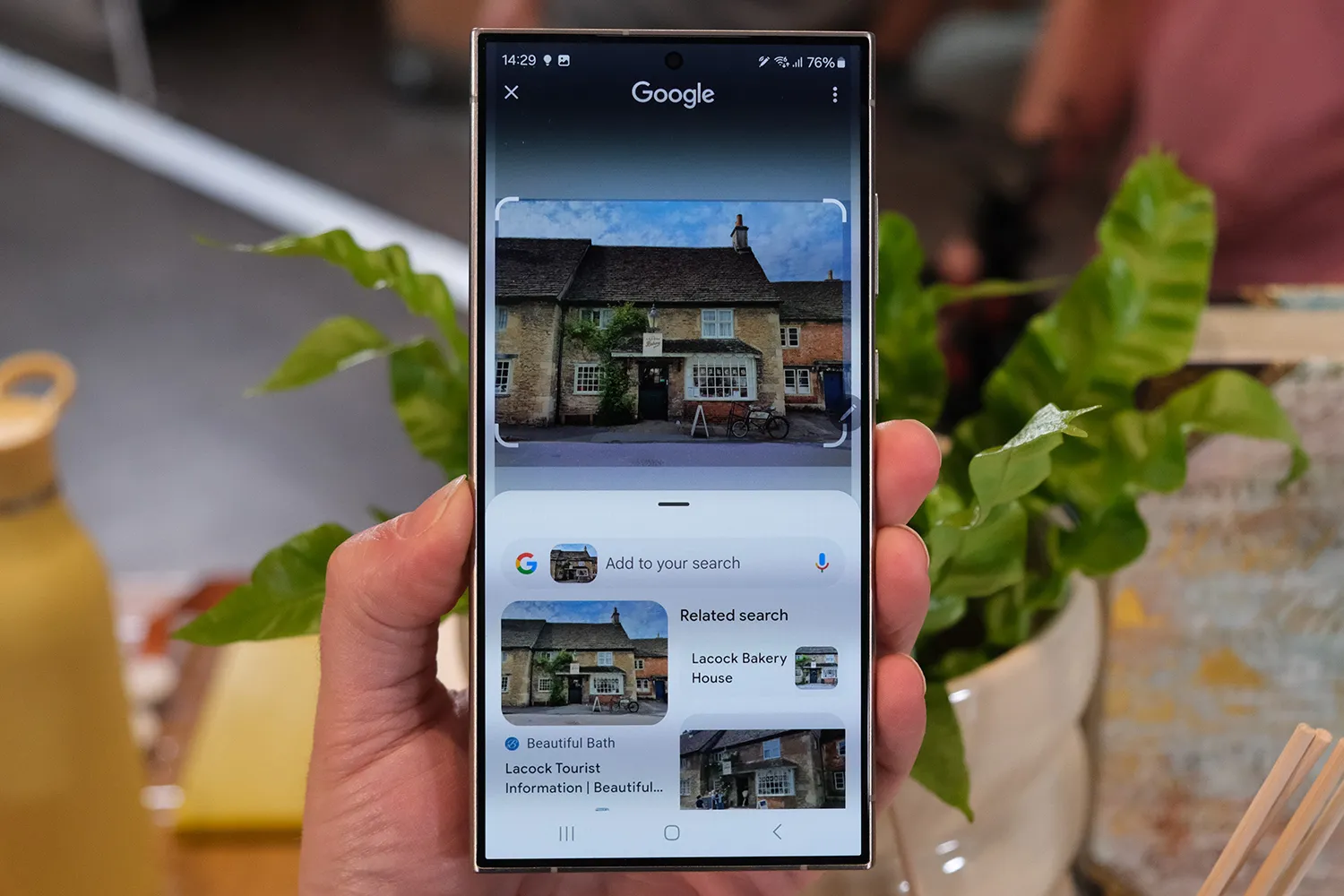
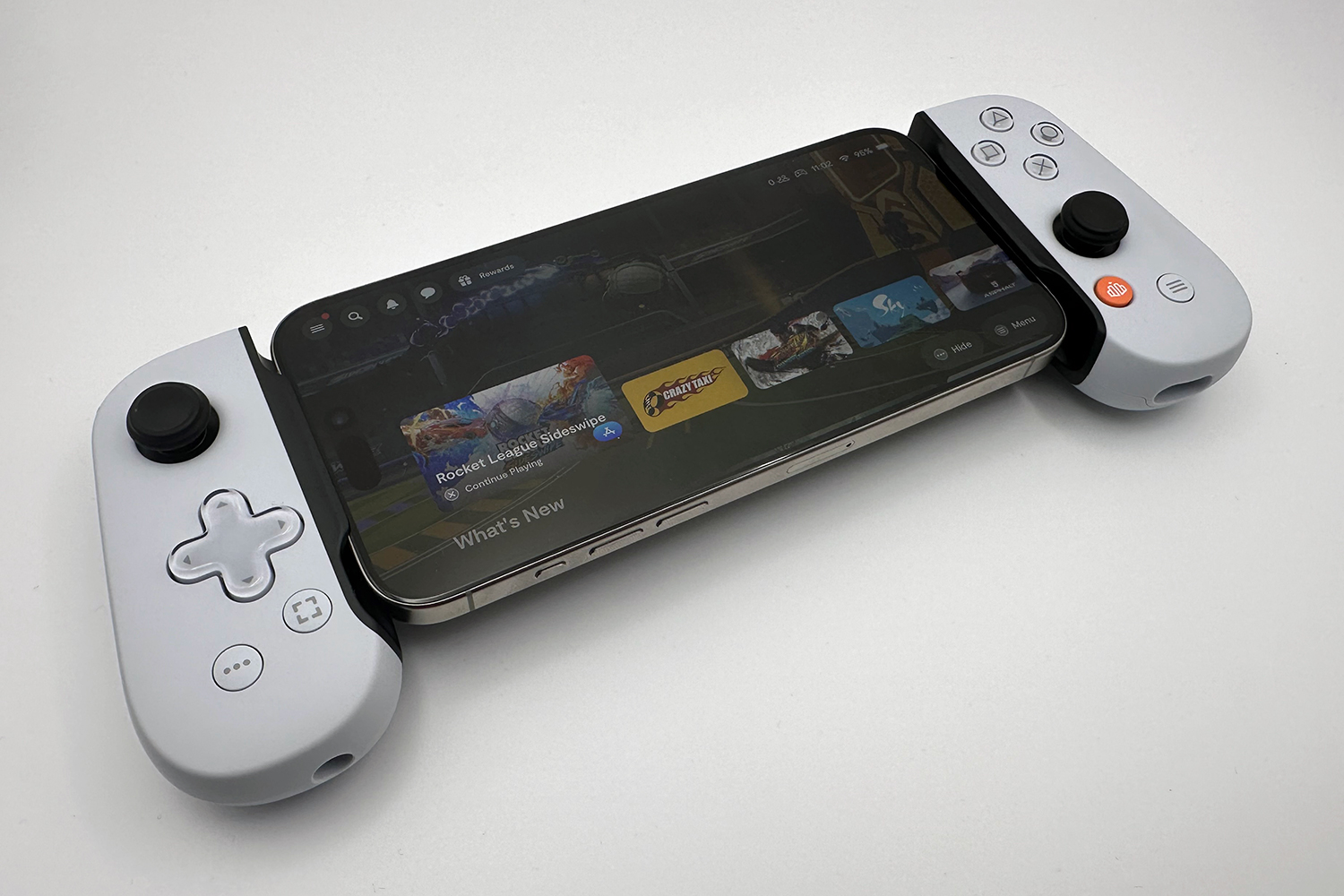
Samsung’s Galaxy S24 Ultra ships with a special ‘For Galaxy’ variant of Qualcomm’s formidable Snapdragon 8 Gen 3 processor, which is around 30% faster than the Gen 2 variant found in the Galaxy S23 Ultra. This chipset comes alongside 12GB RAM and either 256GB, 512GB, or 1TB of storage. It’s a performance monster as far as Android phones go, easily running multiple apps in split screen and playing games at very high frame rates.
Looking at the software side of things, the Galaxy S24 Ultra comes running Android 14 with Samsung’s One UI on top. New for this year, Samsung has also introduced a bunch of AI features, just like every other tech company. These include things like Circle to Search, which is a feature that lets you circle any onscreen object to fire up a web search for it, along with AI-accelerated speech recognition for impressive transcription accuracy. Some of these are genuinely useful, but less so if you don’t use your phone to record meetings or send messages to foreign language speakers.
The S24 Ultra’s battery capacity remains the same as last year, at 5000mAh. Despite not changing, it’s still a very respectable figure that’ll easily see you through a full (and busy) day. It offers 45W/15W wired/wireless charging, which hasn’t improved from last year, but is still better than what the iPhone offers. Those aren’t shoddy charging speeds, but with plenty of other manufacturers blazing ahead with 65W-100W+ speeds, I’d have liked to have seen more of an evolution on this front.
Apple’s in-house silicon has long been some of the fastest you’ll find in any phone, and this year is no different. The Apple A17 Pro CPU at the heart of the iPhone 15 Pro and Pro Max is an absolute powerhouse, with a GPU that can run console-quality games. It’s built on a 3nm process, which makes it especially power efficient. The S24 Ultra’s Snapdragon 8 Gen 3 relies on a 4nm process.
With the iPhone 15 Pro Max, you’ll get iOS 17 out of the box. iOS 17 is incredibly streamlined, with a visual consistency to its homescreen widgets Android fans can only dream of. There aren’t really any AI features here, bar from an accessibility feature that can recreate your voice (and is actually rather impressive). But if you like your intelligence artificial, the iPhone doesn’t have nearly as much to offer.
The iPhone 15 Pro Max has a smaller, 4441mAh cell. Don’t let the numbers sway you too much, Apple has long been able to pull off some software trickery to get iPhones to last as long (or longer) than Android devices, even with smaller batteries. You will be let down a little on charging, however. USB-C finally allows the iPhone 15 Pro Max to charger faster than previous generations. But, it tops out at 25W wired, and 15W wireless through MagSafe – much slower speeds than that of the Samsung. This year is the first year you can reverse-charge other Apple devices on your iPhone, but the Galaxy range has done this for some time.
Cameras: Battle of the zooms
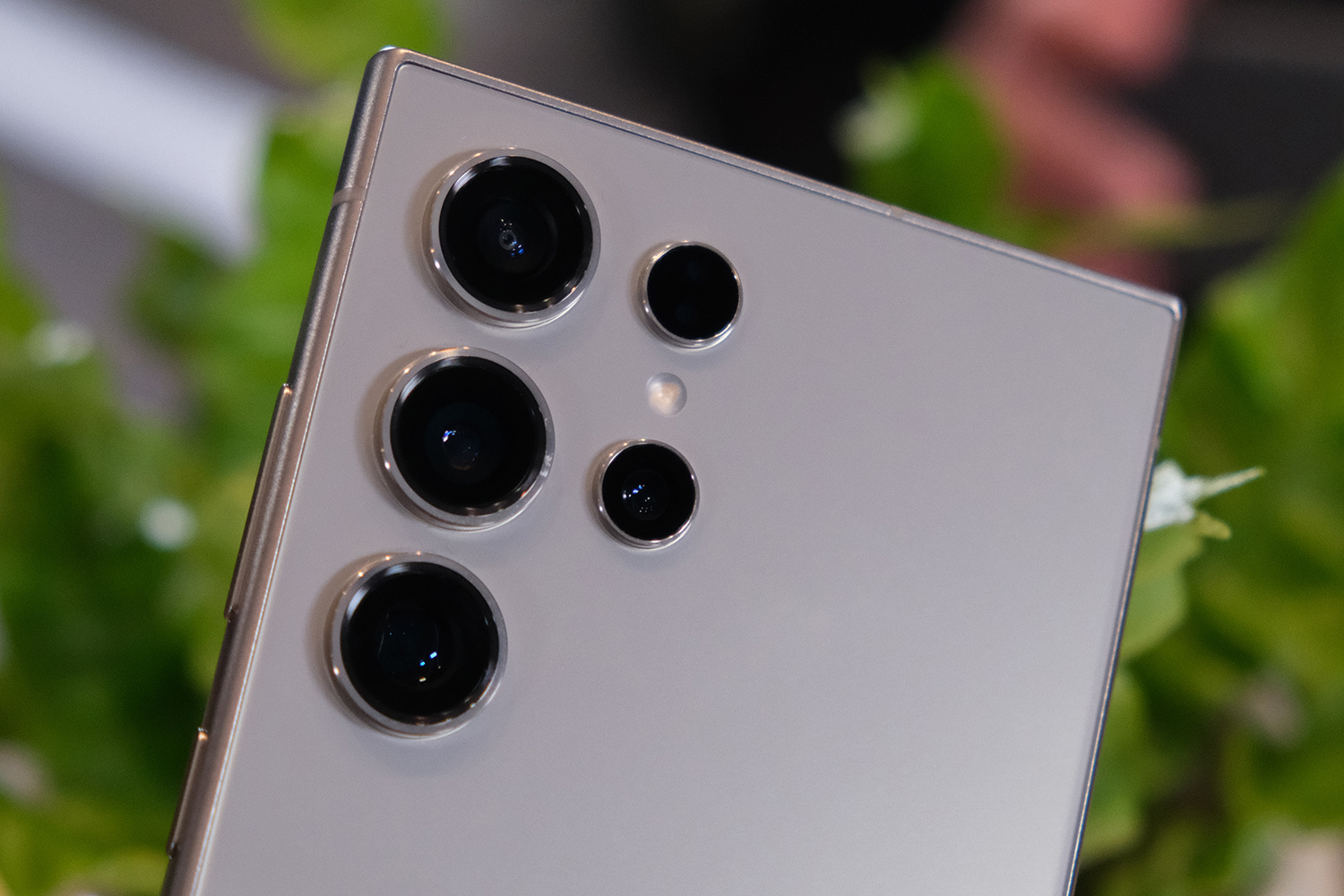
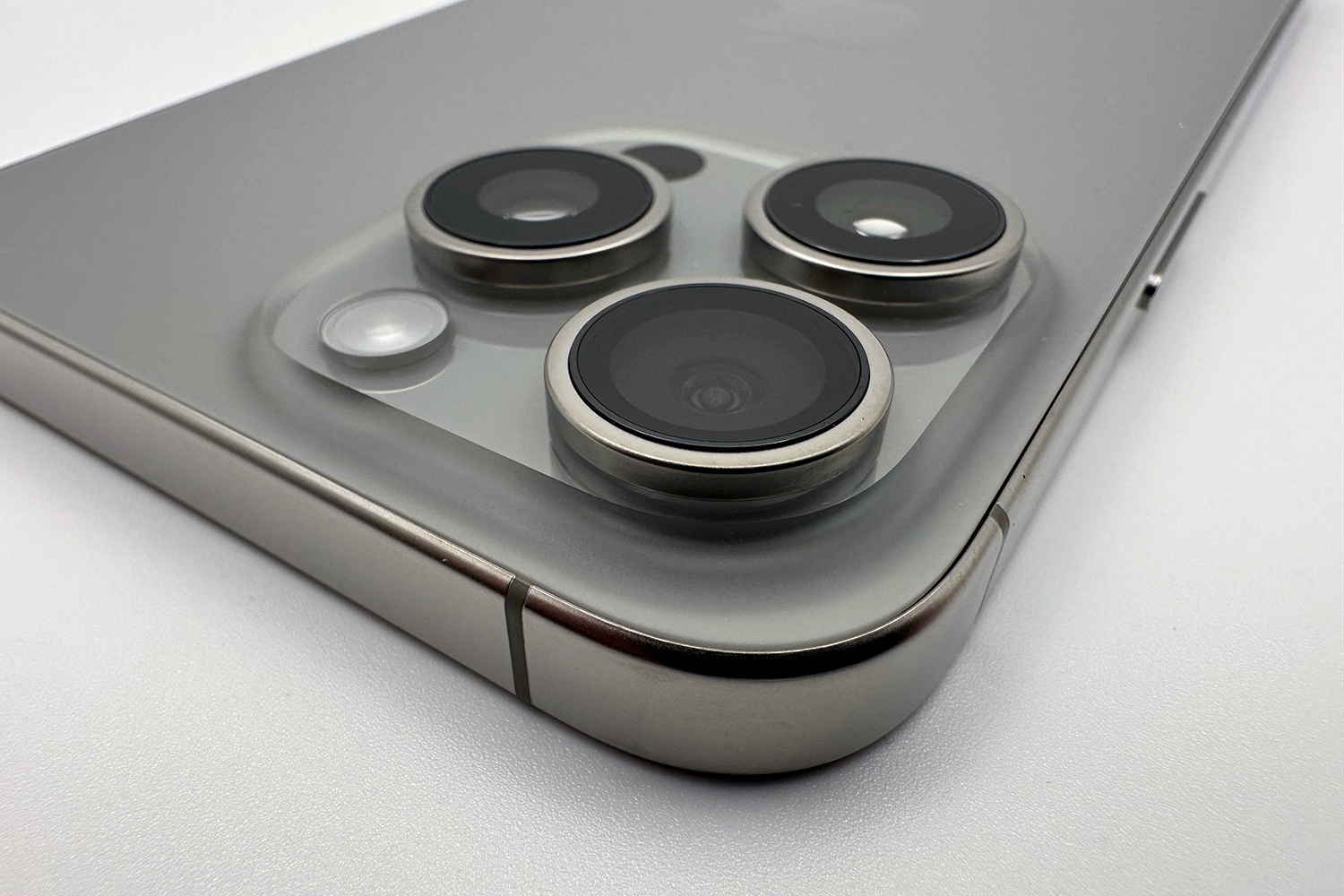
For the Galaxy S24 Ultra, things in the camera department look pretty much the same as last year. The most notable improvements come to the zoom capabilities. It’s a very similar story with the iPhone 15 Pro Max – incremental upgrades, and a big focus on zoom. That focus is an exclusive to the 15 Pro Max as well. There’s a new zoom lens that only ships on that model.
The Galaxy S24 Ultra offers a quad-cam setup, consisting of a 200MP main snapper, 10MP telephoto, and 12MP ultrawide. The bit that’s changed, is that there’s now a 50MP periscope telephoto lens. It’s quite a bit better than last year’s 10MP offering on paper – in reality the 5x optical zoom can’t perfectly match the S23 Ultra’s 10x zoom through algorithms alone. Low-light optical image stabilisation is a big improvement, though, and the smattering of AI-powered tricks are quite impressive. These features mostly around generative fill or object removal, which are tricks we’ve seen on the latest Google Pixel phones.
Apple’s iPhone 15 Pro Max main camera uses a 48MP sensor with f/1.8 lens, dual-pixel PDAF and OIS. The 12MP ultrawide has PDAF too, so can do macro close-ups. The biggest upgrade is to the 12MP telephoto, which uses a tetraprism design to also deliver 5x optical zoom. A new “any lens you like” approach lets you pick which focal length you use the most and set it as default, so there’s less faffing before each snap. From our testing, the iPhone 15 Pro Max takes fantastic still photos from any distance, in all lighting scenarios.
Samsung has long been the champ of zoom, and the S24 Ultra continues that trend. However, the iPhone remains the best choice for video, with ProRes support baked in. With so much computational processing going on, you’ll likely prefer one style over the other.
Samsung Galaxy S24 Ultra vs iPhone 15 Pro Max verdict

Samsung’s latest flagship offers higher specs than the iPhone 15 Pro Max in some areas, most notably the screen. The AI features are also unique to the Galaxy – at least until Apple decides to join in with some AI of its own, likely with iOS 18.
Both phones are ridiculously quick and last all day between charges. Image processing differences mean you may prefer the iPhone’s stills, but I have to give Samsung the edge for overall clarity; it’s the iPhone that handles video better, though.
Both phones will set you back some serious cash, and both are at the top of their game. It’ll likely be the software that sways you either way. Productivity-minded phone owners with deep pockets will be better served by Samsung, but this year I’d say it’s the iPhone that is the better choice for most people.

